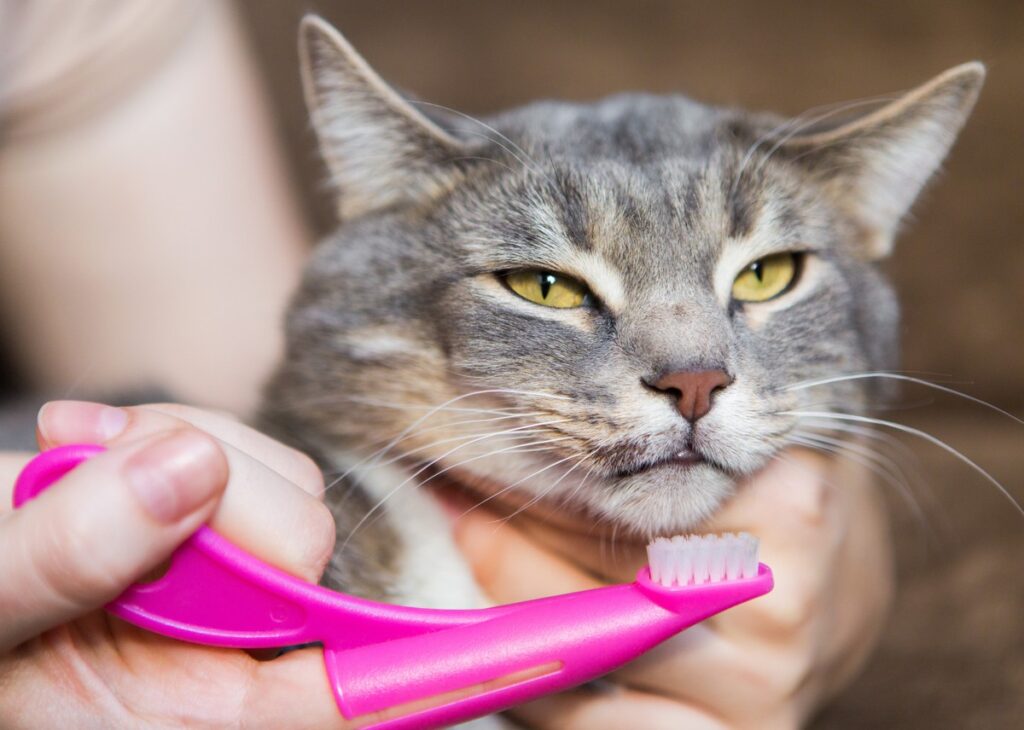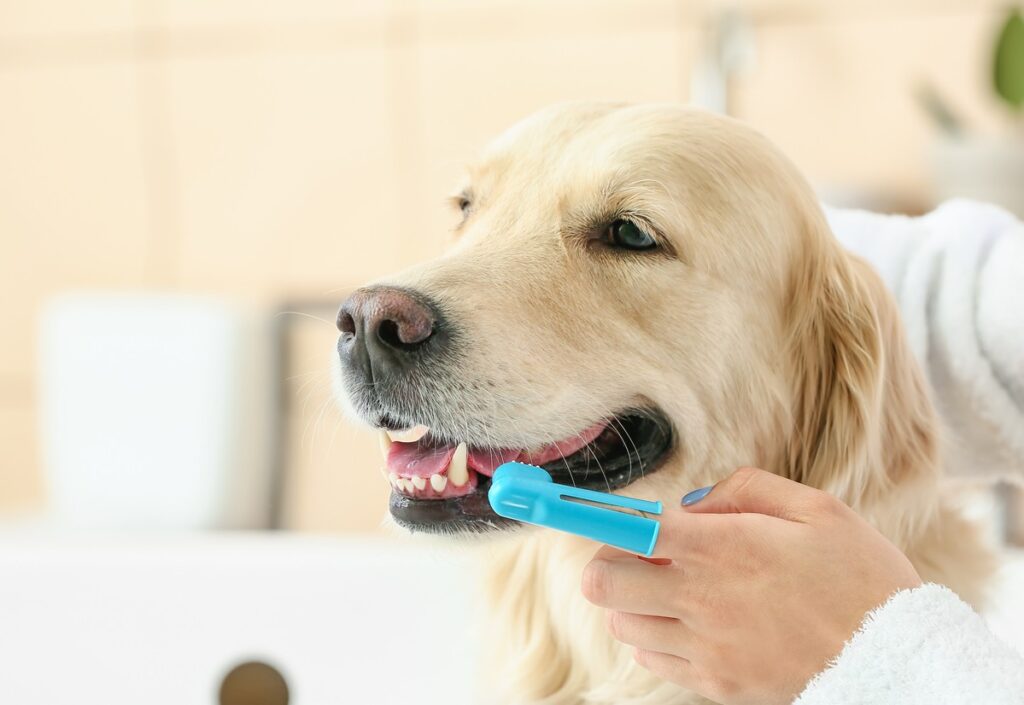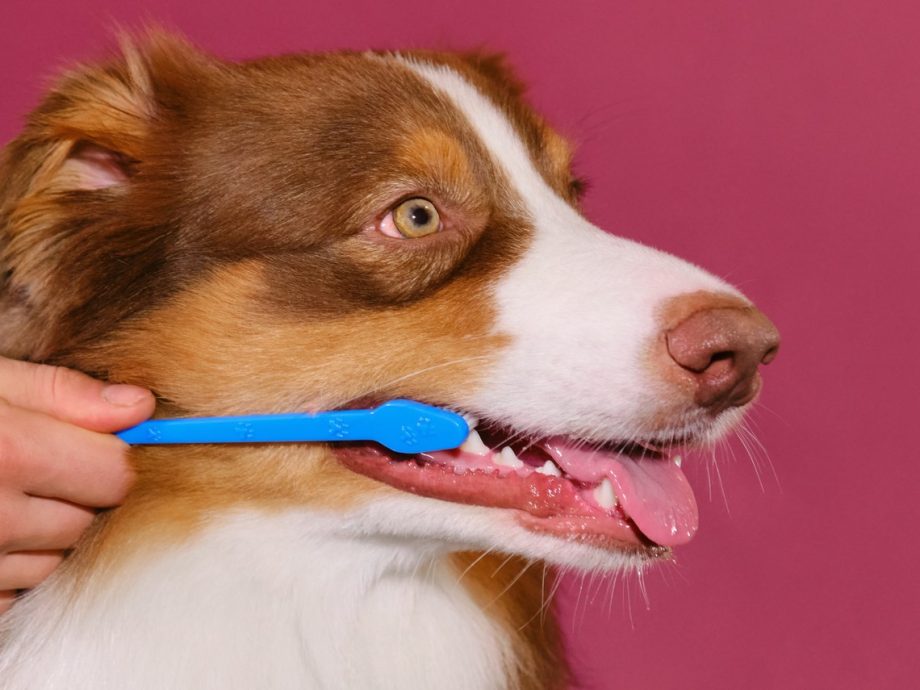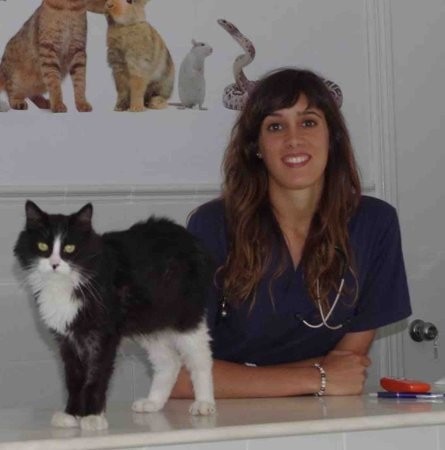Even if it is a common problem, it does not mean that is normal. In fact, it is usually a sign of dental and gum disease. Halitosis can be a sign that sufficient hygiene is lacking. Similar to what occurs in humans, to have a healthy mouth, it is important to look after your pet’s teeth.
What are the causes?
In dogs and cats, halitosis usually occurs due to a problem in the mouth and therefore, when it occurs, it is very important that the pet has a thorough examination of the mouth by a veterinary surgeon. The most common cause of halitosis is due to periodontal or gum disease.
Other causes of bad breath that are much less common than periodontal disease, can be an inappropriate diet, presence of foreign bodies, tumours or infections in the mouth and trauma.
In some cases, halitosis may reflect an underlying disease, such as an infection, diabetes, renal disease, liver disease, gastrointestinal or respiratory problems. However, usually when halitosis occurs due to those conditions, they diseases are usually advanced, and the pet will be showing other clinical signs of disease alongside the halitosis. For example, inappetence, vomiting, diarrhoea or changes in urination and thirst.
Specifically in diabetes, when this is disease is complicated by the production of acids in the blood, a distinctive odour to the breath can be noted, which is usually described as the smell of ‘rotten apples’ or a ‘fruity smell’. On the other side, the halitosis of a dog with renal disease, may be described as a ‘fish odour’, due to the accumulation of increased uric acid. The presence of lip folds in brachycephalic breeds, for example English Bulldogs, can be confused with halitosis.
A consequence of periodontal disease can be the migration of bacteria entering the bloodstream from the mouth, causing disease in other internal organs such as the liver and kidneys, the heart, or the lungs. Another consequence of periodontal disease can be the development of problems at the level of the mouth or nearby, for example abscesses of the tooth or nasal infections.
Because of the possibility of your pet having an underlying disease, it is very important to attend your veterinary practice to have a general check-up of your pet’s mouth. This should happen at least once a year and could coincide with the booster vaccinations, or earlier if you detect a problem.
Periodontal disease usually occurs in two phases. The first one would be the presence of gingivitis, which is initial and reversible if a dental prophylaxis is used. Ongoing home care dental treatment needs to be maintained with focus on the gums. The second phase is periodontitis, which is a later phase, affecting the structures that support the teeth; the ligament and bone that hold the tooth in place.
The way periodontal disease causes a problem is by the presence of dental plaque, which is a layer of bacteria, salivary components, food, and some cells, that accumulates in the teeth due to the lack of oral hygiene. This causes inflammation in the gums and is called gingivitis, observed as red gums and sometimes bleeding. If gingivitis is not managed, then the bacteria will access the structures that support the teeth and causes a loss of the gingival attachment creating pockets underneath.
The bacteria that live in those pockets, will digest oral proteins, and this causes the rotten odour. When the plaque is not eliminated, it becomes hard, and it forms the tartar that is even more difficult to eliminate. Tartar usually accumulates around the canines and the molars, but it can happen in all teeth.

How to avoid bad breath
The best way to treat periodontal disease, is by preventing the accumulation of plaque. However, there are some treatment options of treatment which involve dental prophylaxis that your veterinary surgeon can provide.
However, because bacterial plaque colonises the surface of the tooth very quickly, it is very important to maintain regular hygiene. Avoid recurrence of the problem, even if dental prophylaxis is performed at your veterinary practice.
Providing there is no underlying generalised disease that needs to be addressed, here are some tips that can be followed to prevent a pet’s bad breath and maintain a good oral hygiene.

Combating bad breath in your pet
- Brushing your dog’s or cat’s teeth with a special brush and veterinary toothpaste which should not contain fluoride. Therefore, you should never use human’s toothpaste. It is not needed to rinse off this type of toothpaste.
- To get your pet used to brushing the teeth, you should initially start by doing it for short periods of time and offering a treat at the end.
- Look after your pet’s diet. A bland diet is more likely to leave rests of food in the teeth, as opposed to the dry food or kibble, contributing to the bacterial plaque. Also, it is important to provide a complete diet. Some foods are designed to help with dental hygiene because they contain certain components called polyphosphates which help to reduce calculus and halitosis.
- There are also some commercial snacks that you can use to avoid the formation of bacterial plaque. Usually, you can get these at the pet’s shop.
- Chlorhexidine-containing pastes, gels, and washes: they must be actively applied to the tooth. Water additives are not as effective as the products directly applied to the teeth.
- If the tartar is severe, eventually, the only way to effectively remove plaque or calculus is mechanically, using ultrasonic scalers. This requires general anaesthesia. This procedure may be necessary, because without proper assessment under general anaesthesia, some conditions such as painful teeth may be missed. Usually at the time of the procedure, oral radiographs are performed. This can help decide whether a tooth should be extracted. Following dental radiographs, ‘scale and polish’ is performed, which involves the mechanical removal of plaque. The tip of ultrasonic scalers vibrates and releases water, which cools down the teeth. After the procedure, the teeth are polished with a paste that smooths the surface of the tooth, to avoid the rapid colonization of plaque. When teeth require extraction, sometimes this requires the use of a drill and closure with suture material of the defect.









